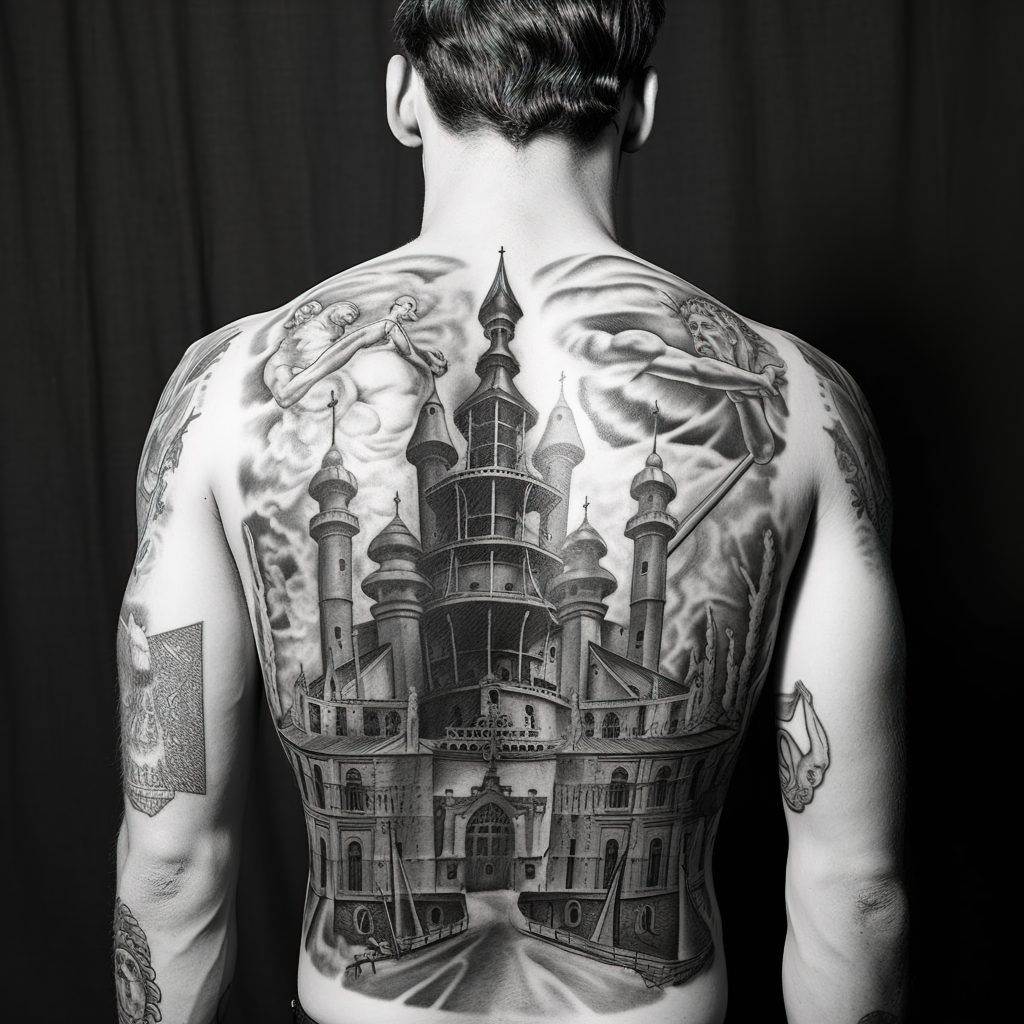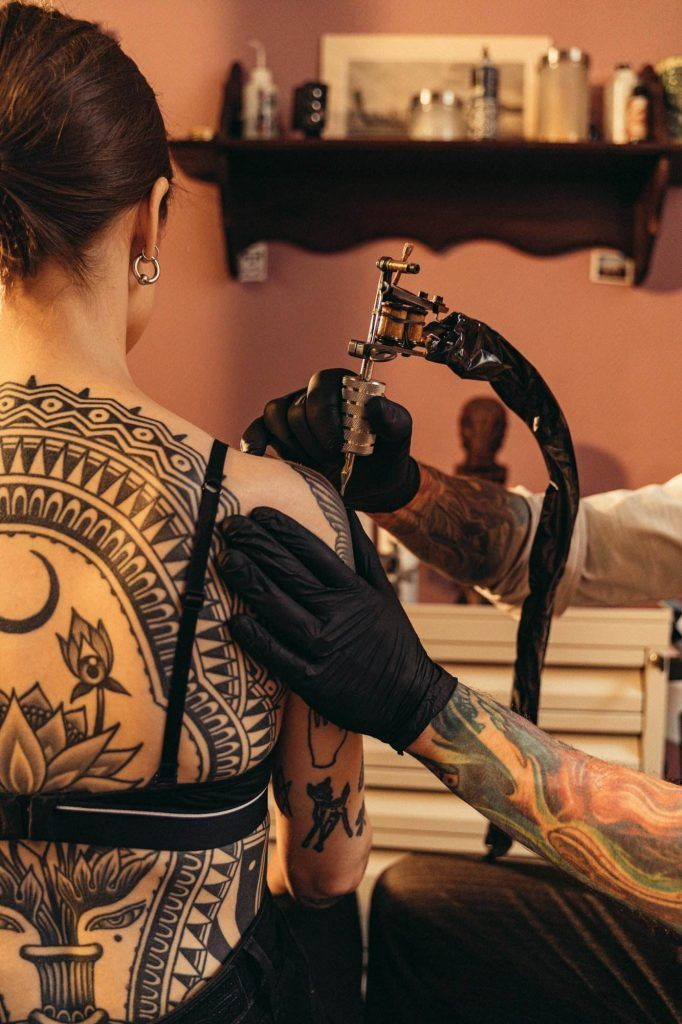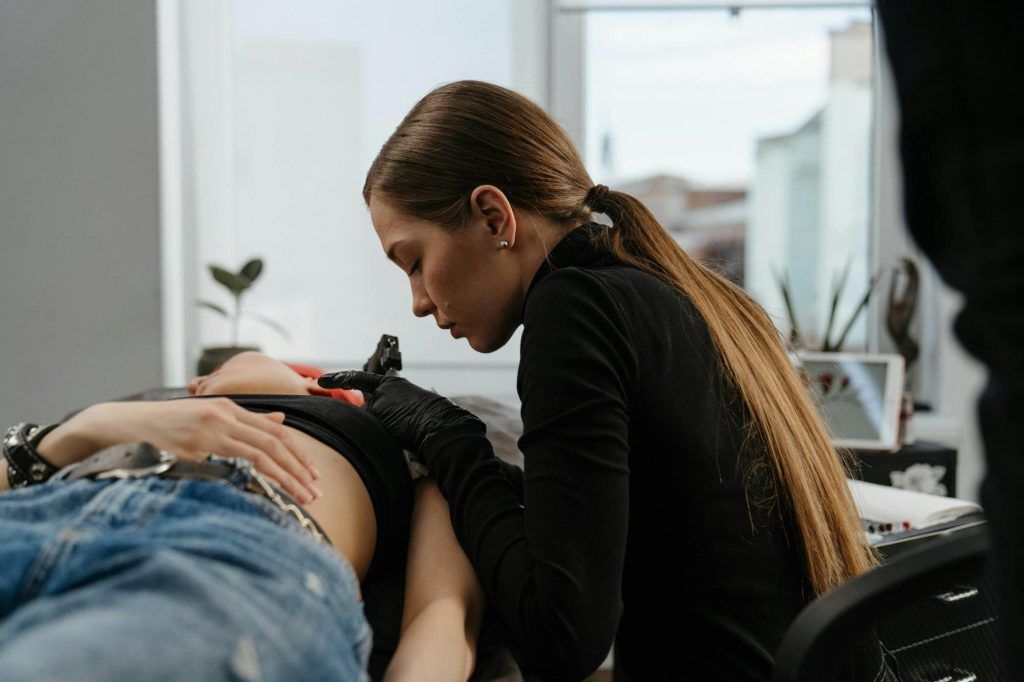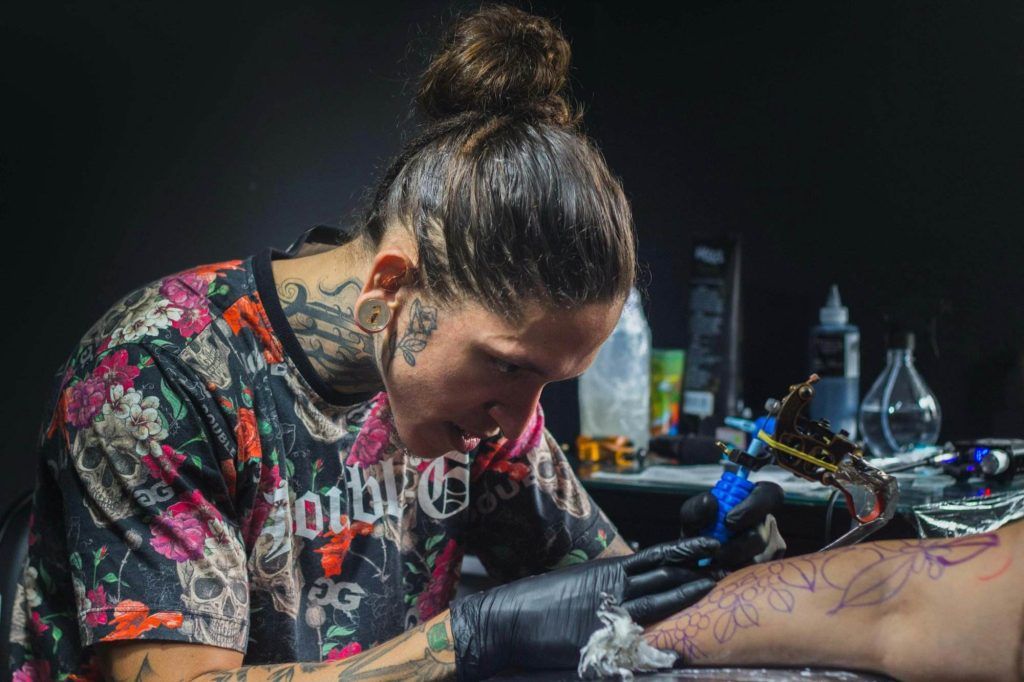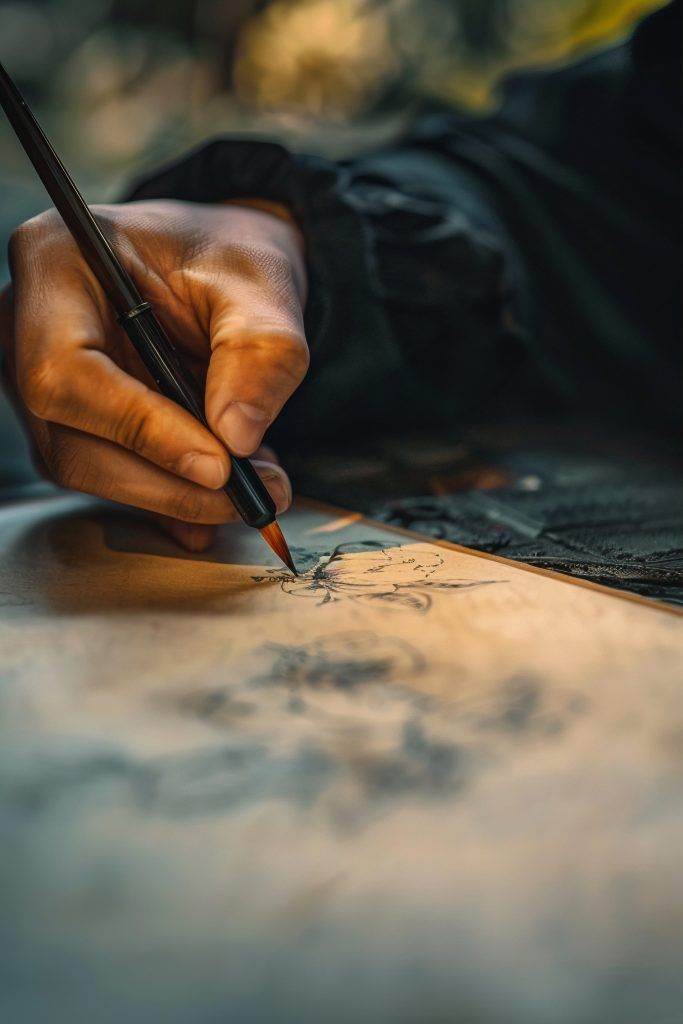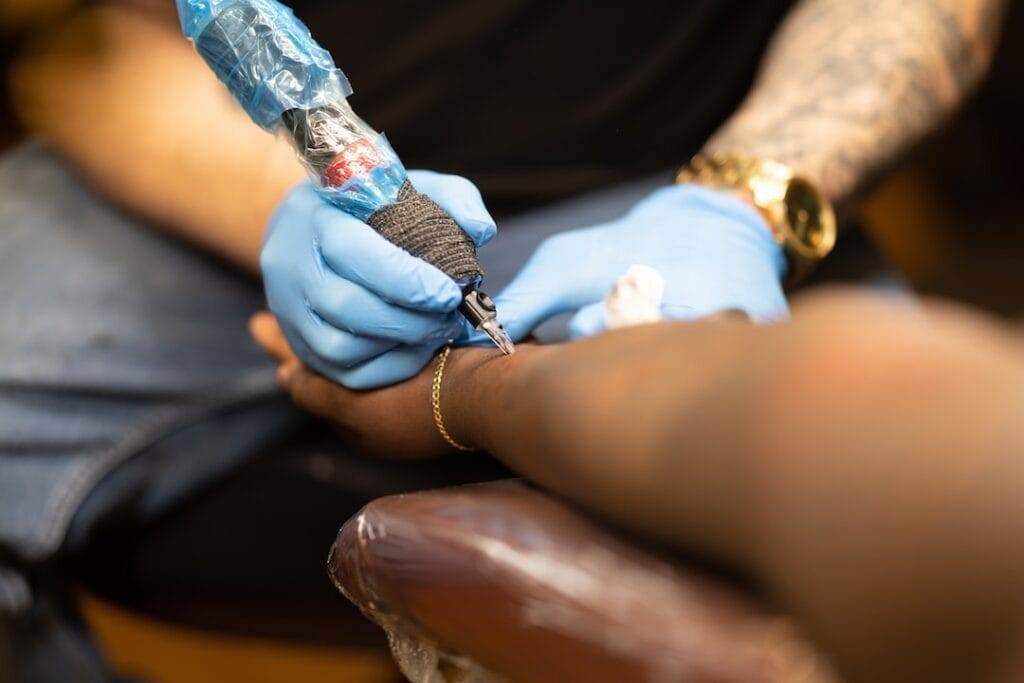Tattoo design has evolved into a unique and captivating form of artistic expression, transcending its historical roots as a mere decorative practice. The intricate balance of aesthetics, symbolism, and personal meaning has elevated tattoo art to a level of sophistication that commands respect and recognition. As the industry has grown, tattoo artists have pushed the boundaries of their craft, transforming the perception of tattoos from a niche subculture to a legitimate art form.
At the heart of this artistic evolution lies the tattoo designer’s ability to capture the essence of their client’s vision and translate it into a visually striking and emotionally resonant piece. The process of creating a tattoo design is a delicate dance between the artist’s technical prowess and the client’s personal narrative, resulting in a unique and deeply meaningful work of art.
The evolution of tattoo art has been a journey of exploration and innovation, with artists drawing inspiration from a wide range of artistic disciplines, including fine art, graphic design, and even traditional cultural motifs. This cross-pollination of styles and techniques has led to the emergence of a diverse and ever-evolving tattoo art landscape, where the boundaries between the conventional and the avant-garde are constantly being pushed.
Key Takeaways
- Tattoo design is a form of artistry that requires creativity and skill
- Understanding the client’s vision is crucial for crafting a custom design
- Sketching and illustrating the concept is a key step in the creative process
- Blending different styles and techniques can result in unique and personalized designs
- Consultation with the client is essential for creating a tattoo that meets their expectations and desires
Tapping into the Client’s Vision
The foundation of a successful tattoo design lies in the artist’s ability to understand and capture the client’s personal story and desired message. This process begins with a thoughtful and open dialogue, where the artist takes the time to listen and truly comprehend the significance and meaning behind the client’s request.
By engaging in this collaborative process, the tattoo artist can gain valuable insights into the client’s preferences, symbolism, and the deeper emotional resonance they wish to convey through the tattoo. This understanding allows the artist to craft a design that not only reflects the client’s vision but also elevates it through their own artistic interpretation and technical expertise.
The delicate balance between respecting the client’s input and bringing a professional perspective is a hallmark of the tattoo design process. The artist must navigate this dynamic, ensuring that the final design is a harmonious blend of the client’s personal narrative and the artist’s creative vision. This collaborative approach fosters a sense of trust and ownership, empowering the client to feel deeply connected to the tattoo they will ultimately wear as a personal expression of their identity.
Sketching the Concept: From Idea to Illustration
The initial brainstorming and ideation process is a crucial step in the tattoo design journey. This phase allows the artist to explore a wide range of concepts, symbols, and visual motifs that could potentially capture the essence of the client’s desired message. Through a process of research, sketching, and refinement, the artist begins to shape the foundation of the tattoo design.
Translating the client’s vision into a cohesive and visually compelling design requires a keen eye for composition, balance, and symbolism. The artist must carefully consider the placement of the tattoo, the flow of the design, and the integration of any meaningful elements or imagery. This process often involves multiple iterations and revisions, as the artist works to refine the sketch and achieve the desired aesthetic.
The final step in this phase is the refinement of the sketch, where the artist meticulously fine-tunes the design to ensure a harmonious balance of elements. This attention to detail is crucial, as the tattoo will ultimately become a permanent part of the client’s body, and the artist must strive to create a piece that is both visually striking and personally meaningful.
Blending Styles and Techniques
Tattoo art is a rich tapestry of diverse styles and techniques, each with its own unique characteristics and expressive qualities. The skilled tattoo artist must possess a deep understanding of these various approaches, allowing them to explore and combine different elements to create a truly distinctive and captivating design.
From the bold and graphic lines of traditional American tattoos to the intricate, flowing patterns of Japanese-inspired designs, the tattoo artist’s repertoire is a testament to the breadth and depth of the art form. By exploring these diverse styles and techniques, the artist can craft a design that not only resonates with the client’s personal preferences but also showcases their own artistic flair and innovation.
The ability to blend these various elements into a harmonious and visually striking design is a hallmark of the accomplished tattoo artist. Through the careful consideration of the client’s body placement and canvas, the artist can adapt the design to ensure a seamless integration, creating a tattoo that is both aesthetically pleasing and true to the client’s vision.
The Importance of Consultation
The consultation process is a critical component of the tattoo design journey, as it lays the foundation for a successful and rewarding collaboration between the artist and the client. During this phase, the artist establishes open and honest communication, fostering an environment of trust and understanding.
By engaging in a thoughtful dialogue, the artist can gain valuable insights into the client’s personal story, the significance of the desired tattoo, and any specific preferences or concerns they may have. This exchange allows the artist to tailor the design to the client’s unique needs, ensuring that the final piece not only captures their vision but also addresses any potential challenges or considerations.
The consultation also serves as an opportunity for the artist to educate the client on the technical aspects of the tattooing process, addressing any questions or concerns they may have. This transparent approach helps to alleviate any anxieties the client may have, fostering a sense of comfort and confidence as they embark on the tattoo journey.
Bringing the Design to Life: The Tattooing Process
The moment the tattoo artist begins to transfer the carefully crafted design onto the client’s skin, the true magic of the process unfolds. The preparation of the skin and the setup of the tattoo station are crucial steps, ensuring a clean, sterile, and comfortable environment for the client.
With unwavering focus and precision, the artist meticulously executes the tattoo, carefully guiding the needle and ink to bring the design to life. This intricate dance between the artist’s hand and the client’s canvas requires a deep understanding of the human body, the properties of the ink, and the nuances of the various tattooing techniques.
Throughout the session, the artist maintains a steady hand and a keen eye, constantly monitoring the progress of the tattoo and making any necessary adjustments to ensure the desired outcome. This level of attention and dedication is a hallmark of the skilled tattoo artist, who understands that the success of the final piece is dependent on their ability to execute the design with the utmost care and precision.
Attention to Detail: Perfecting the Final Piece
The true mark of a masterful tattoo artist lies in their ability to meticulously refine the final piece, ensuring that every detail is executed with the utmost care and attention. This process involves a keen eye for proportion, balance, and the seamless integration of the design elements.
The artist may make subtle adjustments, such as refining the line work, enhancing the shading, or adding finishing touches to the design. This attention to detail is crucial, as it elevates the tattoo from a mere imprint on the skin to a work of art that captures the essence of the client’s vision.
In addition to the artistic refinement, the tattoo artist must also consider the long-term viability and appearance of the tattoo. This may involve addressing any touch-ups or adjustments needed to maintain the tattoo’s vibrant and well-defined appearance over time. By taking these considerations into account, the artist ensures that the client’s tattoo not only looks stunning in the present but also remains a source of pride and personal significance for years to come.
Navigating the Challenges of Custom Tattoos
The creation of a custom tattoo design is a dynamic and often unpredictable process, requiring the tattoo artist to navigate a range of challenges and unexpected obstacles. One of the primary challenges lies in adapting the design to the client’s unique body shape and canvas, ensuring that the tattoo seamlessly integrates with the contours and natural features of the skin.
Throughout the process, the artist must also be attuned to the client’s concerns or hesitations, addressing them with empathy and professionalism. This may involve adjusting the design, modifying the placement, or finding creative solutions to address any issues that arise during the tattooing session.
Troubleshooting unexpected issues and finding innovative solutions is a hallmark of the skilled tattoo artist. Whether it’s addressing technical difficulties, addressing client feedback, or adapting to unforeseen circumstances, the artist must remain calm, focused, and resourceful, always striving to deliver a final piece that exceeds the client’s expectations.
The Lasting Impact of a Personalized Tattoo
The true power of a custom tattoo design lies in its ability to serve as a deeply personal and enduring symbol of the client’s identity, experiences, and emotional journey. For many individuals, a tattoo becomes a tangible representation of their most cherished memories, significant life events, or profound personal beliefs.
The emotional significance of a custom tattoo cannot be overstated, as it becomes a permanent part of the client’s physical and psychological landscape. The tattoo artist’s role in this process is to capture the essence of the client’s vision and translate it into a visually striking and emotionally resonant piece of art.
The lasting legacy of a well-crafted, meaningful tattoo design extends far beyond the initial tattooing session. As the client lives with the tattoo, it becomes a source of personal empowerment, a reminder of their journey, and a symbol that they can share with others. The tattoo artist’s ability to create a design that truly resonates with the client’s heart and soul is a testament to the power of their craft and the enduring impact of personalized body art.
FAQs
What is the creative process of tattoo artists?
Tattoo artists go through a creative process to craft custom designs for their clients. This process involves understanding the client’s vision, creating sketches, and refining the design based on feedback.
How do tattoo artists understand their clients’ vision?
Tattoo artists often start by having a consultation with their clients to understand their ideas, preferences, and the meaning behind the tattoo. They may ask questions and show examples to ensure they have a clear understanding of the client’s vision.
What tools do tattoo artists use to create custom designs?
Tattoo artists use various tools to create custom designs, including sketchbooks, drawing pencils, digital drawing tablets, and design software. These tools help them bring their ideas to life and make adjustments as needed.
How do tattoo artists refine their designs based on client feedback?
After presenting initial sketches to their clients, tattoo artists listen to feedback and make any necessary adjustments to the design. This may involve changing elements, adding details, or altering the size and placement of the tattoo.
What role does creativity play in the tattoo design process?
Creativity is essential in the tattoo design process as it allows artists to come up with unique and personalized designs for their clients. It involves thinking outside the box, experimenting with different ideas, and finding innovative ways to bring the client’s vision to life.

